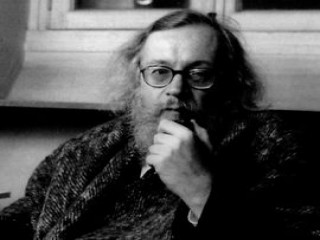
Jerzy Grotowski biography
Date of birth : 1933-08-11
Date of death : 1999-01-14
Birthplace : Rzeszow, Poland
Nationality : Polish
Category : Famous Figures
Last modified : 2011-07-19
Credited as : Theatre director, ,
Jerzy Grotowski was born August 11, 1933, in Rzeszow, Poland. His father, Marion Grotowski, was a painter and sculptor; his mother, Emilia, a teacher. Jerzy attended school in Rzeszow, but he spent a year seriously ill in a hospital when he was 16. During his stay Grotowski read, studied, and pondered carefully what he would do with his life. He decided to devote his life to art. Upon leaving the hospital he lived with his family in Krakow and finished school there. Subsequently he entered the Advanced School of Dramatic Art in 1951 at the age of 18 to become a director. When not at the School of Dramatic Art he found time for some travels which helped shape his concept of directing. In 1955 he visited Moscow to attend the Academy of Stage Craft. Later he traveled on a fellowship to Central Asia, where he was introduced to Oriental philosophy. In 1962 he visited China, where he became interested in the ancient art of Chinese opera. In 1965 he settled in Wroclaw and opened the Laboratory Theatre. Since 1985, he has been working in Pontedera, Italy with a small group of actors and actresses.
The theater is aptly named, for it is not a place where one goes for dramatic entertainment; rather, it is a place of research where the acting troupe explores the potentialities in any given text. The group does not attempt to perform a wide variety of works, but concentrates instead upon a limited number of dramatic pieces and constantly reinterprets and rediscovers them. In doing so they try to get at the mythic archetypes in the work, rather than its literal meaning.
According to Grotowski, when theater was still a part of religion it liberated the spiritual energy of the tribe by incorporating myth and then by profaning and transcending it. The spectator had a renewed awareness of his personal truth in the truth of the myth, "and through fright and a sense of the sacred he came to catharsis." Today, however, social groups are not defined by religion; mythic forms have altered and are disappearing and reappearing in new forms. Thus it is more difficult to elicit the shock needed to pierce the so-called "life mask" and get to the psychic truths that lie behind that mask. What is possible is to "confront" archetypes, and, in so doing, perceive the relationship between human problems and their connection to myth.
The actor is vitally important because, according to Grotowski, the myth is incarnate in him, and through his actions, speech, wails, and gestures he stimulates the audience to confront the truth of the myth for themselves. Grotowski believed that theater could exist without makeup, costumes, and scenery, but that it could not exist without the actor-spectator relationship of perceptual, direct, and "live" communion.
He differentiated between what he called the "Rich theatre" and the "Poor theatre." The "Rich" is one that is rich in faults. It draws upon other disciplines but fails to produce a work of art that has integrity. The Rich theater, in its attempt to compete with film and television, uses mechanical devices that are more appropriate for film and television. Grotowski proposed poverty in the theater, one in which a new space is designed for actors and spectators for each new work. He eliminated costumes, lighting, makeup, and music from his theater and insisted that the actors' physical flexibility is infinitely more interesting than costumes or makeup. Direct lighting and shadows can be utilized effectively without the need for elaborate lighting schemes and mechanisms. The actor can make his own music with his voice.
Grotowski's radical departure from the usual theatrical approach resulted in highly disciplined and rigorously demanding performances. Best known among the Laboratory Theatre's efforts were Wyspianski's Akropolis, Byron's Cain, Caldoron's The Constant Prince, Shakespeare's Hamlet, Marlowe's Doctor Faustus, and an original piece, Apocalypis cum Figuris. All of the plays are about human suffering and treat that suffering so painfully that great demands are put upon the actor and spectator.
Grotowski's methods, which put great emphasis on preparation, exercise, and physical conditioning and discipline, were questioned by some, praised by others. There can be little doubt, however, that he had considerable impact upon contemporary theater.
In 1991, Grotowski and his work were the subjects of a documentary entitled Art as Vehicle. In it, Mercedes Gregory documents a performance of Grotowski's in which he draws upon the power and the passion (now defunct, he believes) of the traditional Catholic liturgy to release the individual from self. Drawing from a myriad of cultural sources—Greek, Egyptian, African, West Indian and Christian—Grotowski incorporates chant, minimal dialogue and ritualistic motions such as rocking, swaying and reeling about to enable his "doers" (his term for actors and actresses) to achieve a freedom from self-consciousness, from acting, and from the performance itself. The performance was enacted solely for the benefit of the "doers, " and the documentary was not to be shown unless Grotowski was present to interpret its contents for a select group of viewers. In making his "liturgy" rational and comprehensible by drawing upon a universal human consciousness, Grotowski "doers" have attempted to live (via acting) the very essence of life itself.
















